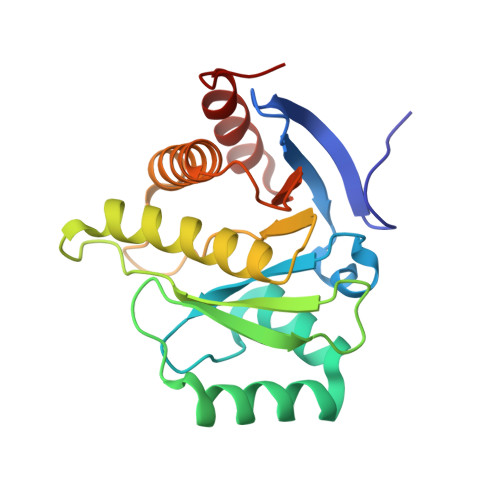MacroH2A histone variants limit chromatin plasticity through two distinct mechanisms.
Kozlowski, M., Corujo, D., Hothorn, M., Guberovic, I., Mandemaker, I.K., Blessing, C., Sporn, J., Gutierrez-Triana, A., Smith, R., Portmann, T., Treier, M., Scheffzek, K., Huet, S., Timinszky, G., Buschbeck, M., Ladurner, A.G.(2018) EMBO Rep 19
- PubMed: 30177554
- DOI: https://doi.org/10.15252/embr.201744445
- Primary Citation of Related Structures:
6FY5 - PubMed Abstract:
MacroH2A histone variants suppress tumor progression and act as epigenetic barriers to induced pluripotency. How they impart their influence on chromatin plasticity is not well understood. Here, we analyze how the different domains of macroH2A proteins contribute to chromatin structure and dynamics. By solving the crystal structure of the macrodomain of human macroH2A2 at 1.7 Å, we find that its putative binding pocket exhibits marked structural differences compared with the macroH2A1.1 isoform, rendering macroH2A2 unable to bind ADP-ribose. Quantitative binding assays show that this specificity is conserved among vertebrate macroH2A isoforms. We further find that macroH2A histones reduce the transient, PARP1-dependent chromatin relaxation that occurs in living cells upon DNA damage through two distinct mechanisms. First, macroH2A1.1 mediates an isoform-specific effect through its ability to suppress PARP1 activity. Second, the unstructured linker region exerts an additional repressive effect that is common to all macroH2A proteins. In the absence of DNA damage, the macroH2A linker is also sufficient for rescuing heterochromatin architecture in cells deficient for macroH2A.
Organizational Affiliation:
Biomedical Center, Physiological Chemistry, Ludwig-Maximilians-Universität München, Planegg-Martinsried, Germany.
















